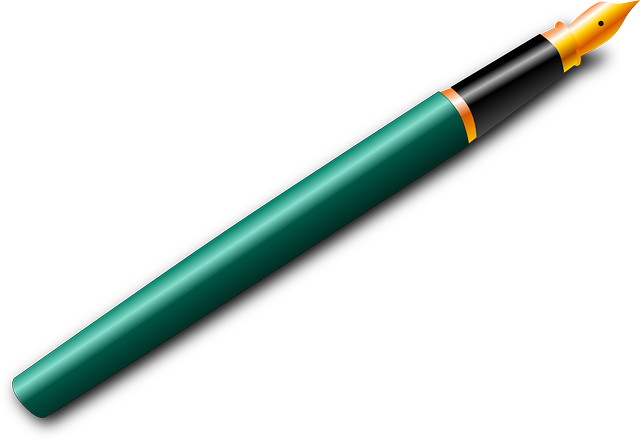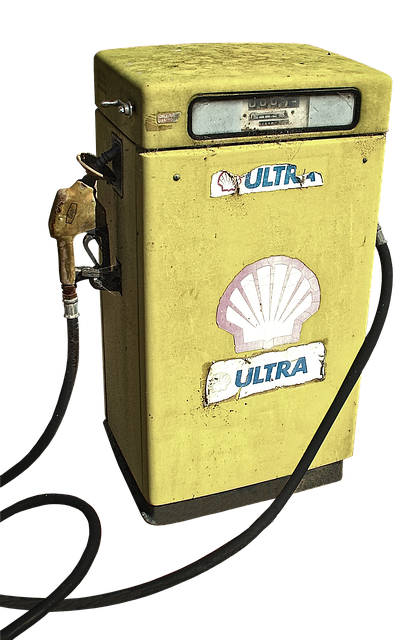Botox and dermal fillers offer different approaches to treating forehead wrinkles. Botox, a neurotoxin, relaxes muscles responsible for dynamic wrinkling, providing natural-looking results with minimal pain and a recovery time of a few hours. Its effects last 3-6 months, requiring less frequent touch-ups than dermal fillers. Dermal fillers, on the other hand, add volume by injecting substances like hyaluronic acid or collagen, offering immediate but temporary results that may need repeating every 6-12 months. The choice between them depends on personal preference, desired outcomes, and budget, with Botox often preferred for its longer duration and more subtle results.
“Uncover the secrets to a wrinkle-free forehead with our comprehensive guide on Botox treatments. Forehead wrinkles, often an early sign of aging, can be effectively managed through Botox injections. This article delves into the science behind Botox, its mechanism in treating forehead lines, and how it compares to dermal fillers.
We explore the advantages, procedure insights, safety aspects, and long-lasting results of Botox, empowering you with knowledge to make an informed decision between Botox vs. dermal fillers for your cosmetic journey.”
Understanding Forehead Wrinkles and Their Causes

Forehead wrinkles, often a sign of age and environmental factors, can be both a cosmetic concern and an indication of underlying muscle activity. These wrinkles, known as glabellar lines or frown lines, are formed by the constant contraction of the corrugator supercilii muscles, which cause the skin to fold and create fine lines. Understanding the causes is essential in deciding on effective treatment methods.
When considering options for wrinkle reduction, Botox and dermal fillers stand out. Botox, a neurotoxin, works by temporarily paralyzing the muscles responsible for wrinkles, thus smoothing out the skin’s surface. On the other hand, dermal fillers enhance volume loss by injecting hyaluronic acid or collagen into the skin, providing immediate results but with shorter-lasting effects than Botox. In terms of effectiveness for forehead wrinkles, Botox often offers a more precise solution, making it a popular choice among those seeking wrinkle-free foreheads.
The Role of Botox in Treating Wrinkles

Botox has established itself as a leading treatment for wrinkles, particularly in the delicate area of the forehead. Unlike dermal fillers, which plump and enhance specific areas by injecting a substance under the skin, Botox works by relaxing muscles that cause dynamic wrinkling. When injected into targeted muscle groups, Botox prevents contractional forces from pulling on the overlying epidermis, thus smoothing out fine lines and wrinkles that form due to repeated facial expressions.
This minimally invasive procedure offers several advantages over dermal fillers. First, it provides a natural-looking result by simply softening expression lines rather than significantly altering the skin’s volume. Second, Botox treatments are generally less painful and have shorter recovery times compared to filler injections. Moreover, Botox has a longer lasting effect, typically lasting 3-6 months, whereas dermal fillers may require more frequent boosts to maintain their effects.
How Does Botox Work for Forehead Lines?

Botox, a protein derived from bacteria, is a popular non-surgical treatment for forehead lines and wrinkles. When injected into specific muscles, Botox relaxes them, preventing contraction that causes dynamic lines and wrinkles to form. Over time, this relaxation leads to a reduction in the appearance of fine lines and furrows on the forehead, creating a smoother, more youthful look.
Compared to dermal fillers, which add volume to the skin by injecting substances like hyaluronic acid, Botox offers a different approach. Dermal fillers fill in deep wrinkles and creases, while Botox targets the underlying muscles responsible for their formation. This distinction makes Botox particularly effective for preventing the formation of new wrinkles and addressing dynamic lines caused by constant facial expressions.
Advantages of Using Botox Over Dermal Fillers

When considering treatments for wrinkles, particularly on the forehead, it’s essential to explore options like Botox and dermal fillers. While both are popular choices, there are distinct advantages to using Botox over dermal fillers. One of the key benefits is its natural appearance. Botox works by relaxing specific muscles, preventing them from contracting and causing wrinkles. This results in a more subtle and natural-looking enhancement compared to dermal fillers, which can sometimes appear overly dramatic or uneven.
Another advantage of Botox is its temporary nature. Since it’s a protein that breaks down over time, the effects typically last between 3 to 6 months, offering a more temporary solution. This can be advantageous for individuals who want to try out a wrinkle-reducing treatment without committing to a permanent result. In contrast, dermal fillers provide immediate results but may require more frequent top-ups, which can be both costly and time-consuming.
What to Expect During a Botox Procedure

When considering Botox for wrinkle reduction on the forehead, it’s natural to have questions about what to expect during the procedure. Unlike dermal fillers, which involve injecting a substance under the skin to add volume and smooth out wrinkles, Botox works by temporarily paralyzing the muscles that cause dynamic lines and creases.
During a typical Botox session, a qualified provider will clean your skin and use a fine needle to inject tiny amounts of the botulinum toxin into specific muscle groups in your forehead. You may experience mild discomfort or a pinching sensation during the injections, but many patients find the process relatively quick and tolerable. After the procedure, there may be temporary redness or swelling, but you can usually resume your normal activities within a few hours.
Safety and Potential Side Effects of Botox Injections

When considering Botox for wrinkle reduction, it’s crucial to understand the safety profile and potential side effects compared to dermal fillers. While both procedures aim to minimize facial wrinkles, they work differently. Botox injections temporarily paralyze muscles, preventing contraction-induced lines, whereas dermal fillers add volume by injecting a substance into the skin.
Although generally safe when administered by a qualified professional, Botox has potential risks, such as temporary muscle weakness, bruising, or headaches. In rare cases, it may lead to asymmetry or difficulty closing eyes. Dermal fillers, on the other hand, might cause redness, swelling, or an uneven surface, with more significant risks associated with incorrect placement or an allergic reaction. Choosing between Botox and dermal fillers depends on individual preferences, desired results, and potential side effect tolerance.
Longevity and Maintenance of Botox Results

Botox treatments for forehead wrinkles offer a significant advantage in terms of longevity compared to dermal fillers. While dermal fillers can provide instant results, they typically last between 6 to 18 months and may require touch-ups every few months. In contrast, Botox effects can endure for up to 4-6 months, offering a more extended period of smoothness and reduced wrinkling. This longer duration makes Botox an attractive option for individuals seeking sustained results without frequent injections.
The maintenance of these results also differs between the two treatments. With Botox, the effect decreases gradually as the botulinum toxin diffuses into surrounding areas. Regular touch-ups every 3 to 4 months can help maintain the desired forehead appearance. In contrast, dermal fillers maintain their shape for a shorter time and may require more frequent re-injection cycles, usually every 6 to 12 months, depending on the type of filler used.
Comparatively: Benefits of Dermal Fillers vs. Botox

When considering cosmetic treatments for a wrinkle-free forehead, it’s essential to understand the differences between Botox and dermal fillers. Both procedures aim to reduce facial wrinkles, but they work in distinct ways. Botox, a protein derived from bacteria, temporarily paralyzes muscles by blocking nerve signals, smoothing out dynamic lines like frown lines or crow’s feet. This effect lasts for several months, making it a popular choice for those seeking a natural, non-surgical approach.
On the other hand, dermal fillers are substances injected into the skin to add volume and enhance facial contours. These fillers can be made from hyaluronic acid, collagen, or synthetic materials. Unlike Botox, which relaxes muscles, dermal fillers plump up the skin, filling in deep wrinkles and enhancing facial features. This results in a more youthful appearance that can last for several years, depending on the filler type used. The choice between Botox vs. dermal fillers ultimately depends on individual preferences, budget, and the specific areas to be treated.
Making an Informed Decision: Choosing the Right Treatment

When considering Botox or dermal fillers for wrinkle reduction on the forehead, making an informed decision is paramount. Both treatments have their merits and are popular choices in the aesthetic industry, but they work differently and cater to varied needs. Botox, a neurotoxin, relaxes muscles, smoothing out dynamic wrinkles caused by facial expressions. It’s ideal for fine lines and frowns, offering a subtle yet effective result. On the other hand, dermal fillers enhance volume loss, plumping up creases and wrinkles, including deeper forehead lines. They provide immediate results and last longer than Botox, but they may not be as effective for addressing muscle-related wrinkles.
Choosing between Botox and dermal fillers depends on your specific concerns and desired outcomes. It’s crucial to consult a qualified professional who can assess your skin, understand your goals, and guide you towards the most suitable treatment. They’ll factor in factors like the depth of wrinkles, your lifestyle, and expected recovery time to help you make a well-informed choice for achieving a wrinkle-free forehead.
